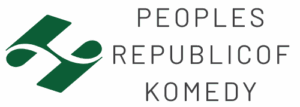In a world where even the simplest tasks can seem like rocket science, technical documentation is the unsung hero that saves the day. Imagine trying to assemble furniture without instructions—chaos would reign supreme! Writing clear and concise technical documentation is crucial for guiding users through complex processes, ensuring they don’t end up lost in a labyrinth of jargon and confusion.
Table of Contents
ToggleUnderstanding Technical Documentation
Technical documentation consists of written materials that explain complex systems, processes, or products. It’s essential for helping users understand how to utilize or troubleshoot technology effectively.
What Is Technical Documentation?
Technical documentation includes user manuals, installation guides, API references, and system operation procedures. Various formats exist, like online help systems, printed manuals, and video tutorials. Authors aim to make information accessible and straightforward to enhance comprehension. These documents serve as vital resources for users seeking to understand features, functions, or troubleshooting methods.
Importance of Technical Documentation
Technical documentation plays a crucial role in streamlining user experiences. Proper documentation reduces the learning curve by providing clear instructions and visual aids. It minimizes confusion and enhances user satisfaction while preventing errors during operation. Developers and engineers rely on thorough documentation to ensure efficiency during product development. Quality technical writing fosters better communication between creators and users, which leads to a more engaged user base.
Key Components of Technical Documentation

Technical documentation requires attention to detail and a strategic approach to facilitate user comprehension. Key components contribute significantly to its effectiveness.
Structure and Organization
A clear structure enhances the usability of technical documentation. It should follow a logical sequence, guiding users through the content smoothly. Sections like an introduction, main content, and summary provide essential context. Each section must focus on a specific aspect, reducing information overload. Additionally, using headings and subheadings creates an easier navigation path. Diagrams and bullet points can complement text, emphasizing important details. This organization helps users locate information quickly and efficiently.
Clarity and Conciseness
Clarity and conciseness are paramount in technical documentation. Language must remain straightforward, avoiding jargon and complex terminology whenever possible. Define terms where necessary, ensuring users grasp the content fully. Each sentence should communicate a single idea, minimizing clutter and confusion. Short paragraphs aid readability, allowing users to digest information easily. Visual aids, such as screenshots or flowcharts, can clarify complex concepts and enhance understanding. Overall, clear and concise language prevents misinterpretation, fostering better user experiences.
Best Practices for Writing Technical Documentation
Effective technical documentation requires attention to detail and a focus on user needs. A few best practices can enhance clarity and usability.
Know Your Audience
Understanding the target audience shapes the language and content used in documentation. Assessing their technical expertise helps determine the level of detail required. Focus on specific needs and expectations to ensure the information resonates. For example, novice users may require more introductory information, while advanced users seek technical depth. Gathering feedback through user surveys or direct communication can refine the approach. Tailoring content increases relevance and improves user experience.
Use of Visual Aids
Incorporating visual aids enhances comprehension and retention. Diagrams, screenshots, and flowcharts break down complex information visually. Each visual element supports the text, making it easier to grasp difficult concepts. Infographics can summarize processes, while annotated images clarify steps in procedures. Including well-organized tables allows for quick reference of essential data. By complementing written instructions with visuals, documentation becomes more engaging, catering to different learning styles and improving usability significantly.
Tools for Writing Technical Documentation
Effective technical documentation benefits from various tools designed to enhance clarity and organization. Utilizing the right software and collaboration platforms can streamline the writing process, making it more efficient.
Software and Applications
Numerous software options assist in creating and managing technical documentation. Markdown editors like Typora offer a simple, distraction-free writing interface. Moreover, tools such as MadCap Flare and Adobe RoboHelp support complex documentation projects with features for single-source publishing and content reuse. Additionally, diagramming tools like Lucidchart and Microsoft Visio enable authors to visualize processes, enhancing understanding through graphical representations. These applications make documentation clear and user-friendly.
Collaboration Platforms
Collaboration platforms significantly enhance teamwork in documentation efforts. Tools like Confluence offer spaces where writers can share drafts, gather feedback, and track changes in real-time. Google Docs facilitates seamless collaboration, allowing multiple authors to edit simultaneously. Notion provides versatile organizational capabilities, combining notes, tasks, and databases for comprehensive project management. Utilizing these platforms increases communication and ensures all team members contribute effectively, resulting in higher quality documentation.
Effective technical documentation is vital for enhancing user experiences and ensuring that complex information is easily digestible. By prioritizing clarity and organization writers can create materials that empower users to navigate technology confidently. Understanding the audience and employing visual aids can further elevate the quality of documentation.
Utilizing the right tools not only streamlines the writing process but also fosters collaboration among teams. As technology continues to evolve the need for well-crafted documentation will only grow. Investing time and effort into producing high-quality technical documents ultimately leads to greater user satisfaction and engagement.





